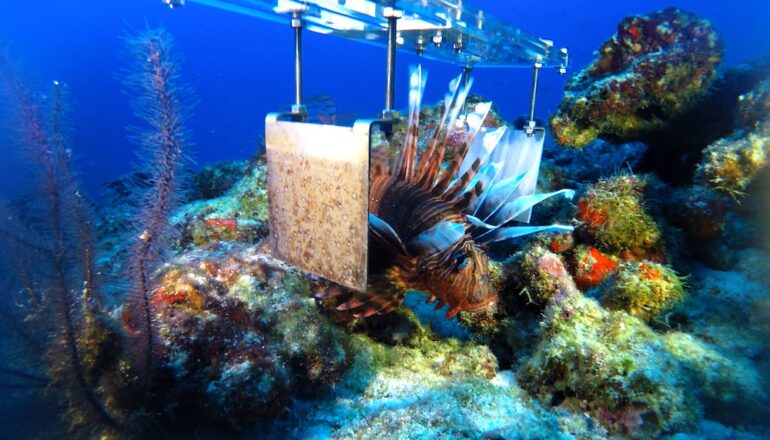A team of researchers from the deep ocean research charity Nekton, and Robots In Service of the Environment (RISE) has designed a shocking new way to control the spread of lionfish in the Caribbean. The team is currently testing two methods including a remotely operated vehicle built to deliver a fatal electric shock to the invasive species.
Lionfish are native to the Indo-Pacific and do no register as predators in the Caribbean where they are becoming a grave concern to local ecosystems. Lionfish are voracious predators which feed on small fish and crustaceans, and in the Caribbean, these fish do not recognize the lionfish as a threat.

Currently, the fight to control lionfish populations is done by hand with a spear, by scuba divers, scientist, and fishermen. However, lionfish can be found far below recreation diving limits, below 40m or (130 feet) which have left scientist concerned about the effect they are having on the reef ecosystem.
Nekton and RISE are currently testing two ROV’s for killing lionfish, and capable of safely patrolling the seas below 40m. One model carries a spear gun, matching how human divers typically harvest lionfish. The second model will electrocute the lionfish by using a robot arm equipped with two metal electrodes.
To start, each model will sport video cameras, so a pilot can guide the ROVs from onshore or inside a boat. But the team’s long-term plan is autonomous underwater robots that hunt lionfish on their own.

John Rizzi who is appointed as the group’s executive director said “one of the first steps in development, especially for the zapper model, is observing how lionfish might react to an approaching robot.” Due to their venomous barbs, lionfish have few predators and as a result, they don’t automatically flee when approached.
To keep other nearby fish from being zapped, Rizzi and the other designers are relying on ocean chemistry. Saltwater is highly conductive, so they expect it should act almost like a straight wire between the two electrode plates. [PBS]



